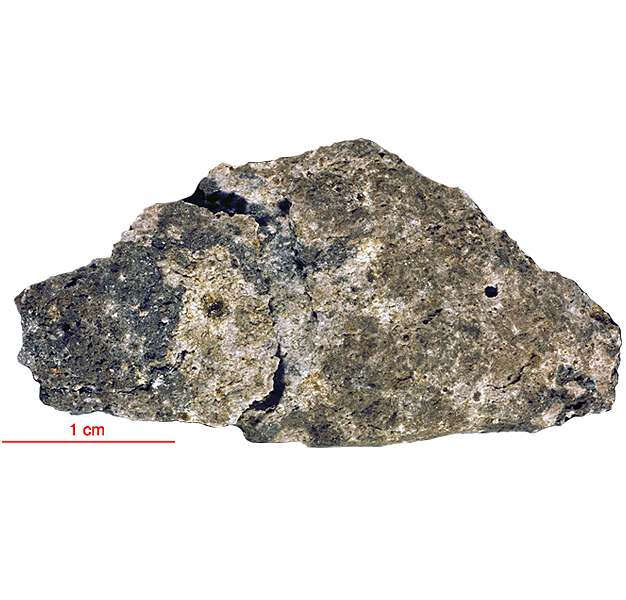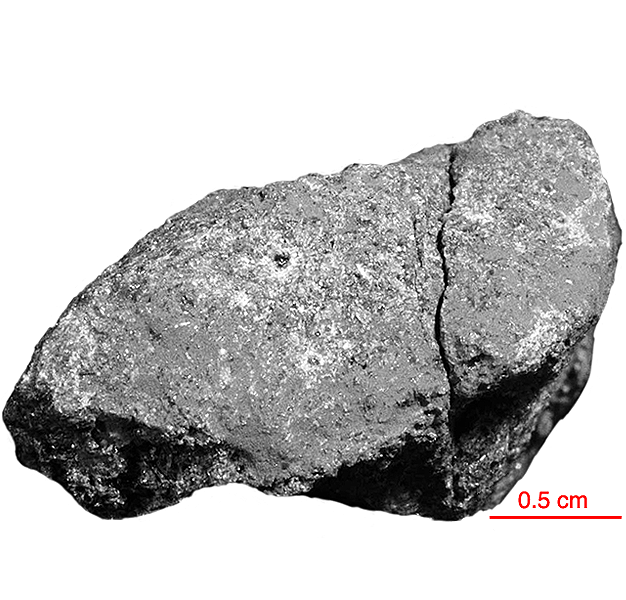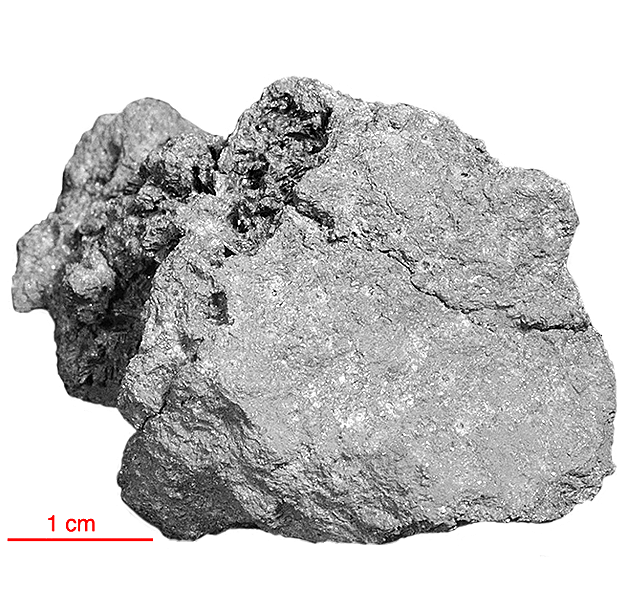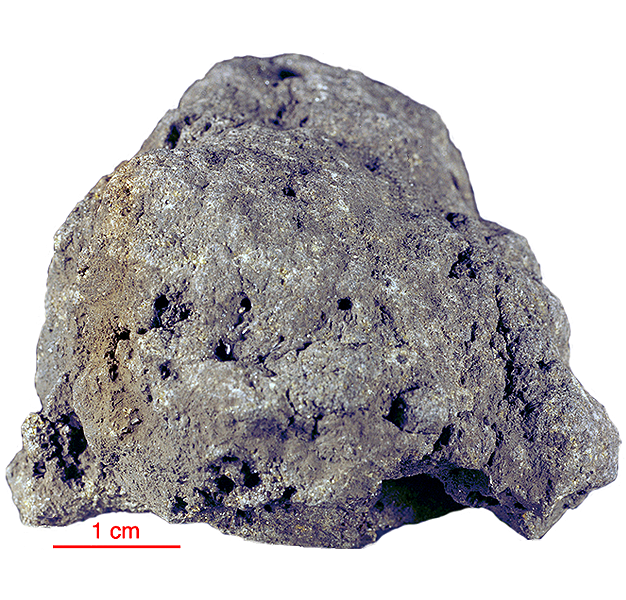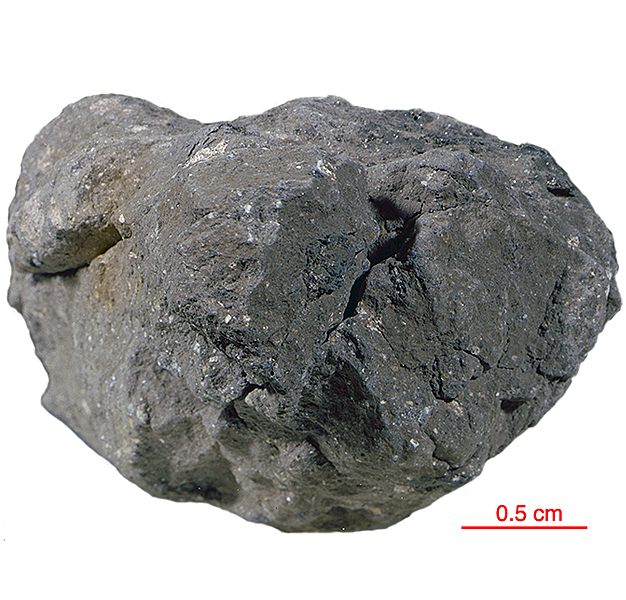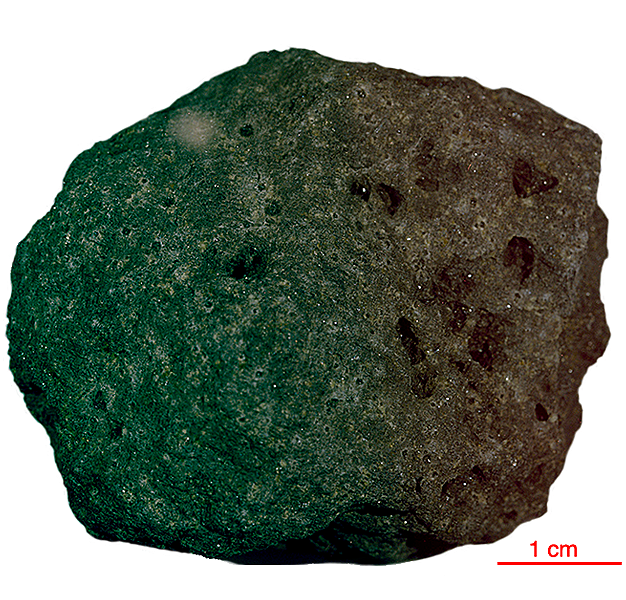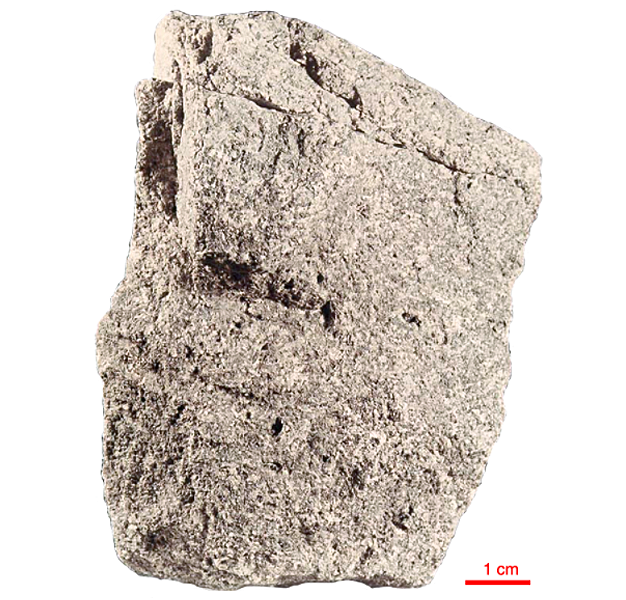
Fact sheet
12064 is a coarse-grained subophitic basalt characterized by anhedral pyroxene crystals (0.4 to 2.0mm) intergrown with plagioclase anhedra (0.8-1mm) and rare subhedral plagioclase tablets (0.2 – 1mm). Pyroxene is compositionally zoned. The rather coarse-grained mesostasis of 12064 is characterized by intergrowths of fayalite, hedenbergite, and glass - also containing K-spar, whitlockite, apatite and two Zr-rich phases. Long laths (1.5 mm) of tridymite and anhedral to subhedral crystals occur in relative abundance. Pyroxferroite occurs sporadically as distinctly yellowish, transparent areas next to clinopyroxene. When the clinopyroxene and pyroxferroite coexist, a clear and sharp optical contact is visible between them.
The sample weighed 1214.3 grams before analysis and is 3.18±0.01 billion years old (Ar/Ar).
Further details of this and other Apollo samples are here: http://curator.jsc.nasa.gov/lunar/
Apollo 12 returned 34 kilograms of samples, including 45 rocks, samples of lunar 'soil', and several core tubes that included material from as much as 40 centimetres below the lunar surface.
Apollo 12 rocks were almost all basalts, with only two breccias in the returned samples. The basalts at the Apollo 12 site formed 3.1 to 3.3 billion years ago, roughly 500 million years later than the Apollo 11 basalts. Overall, there is much less of the element titanium in the Apollo 12 samples than in the Apollo 11 samples, which explains the more reddish colour of this region. The differences in age and chemical composition between the Apollo 11 and Apollo 12 samples demonstrate that mare volcanism did not occur as a single, Moon-wide melting event.
Apollo 12 was launched on 14 November 1969.

